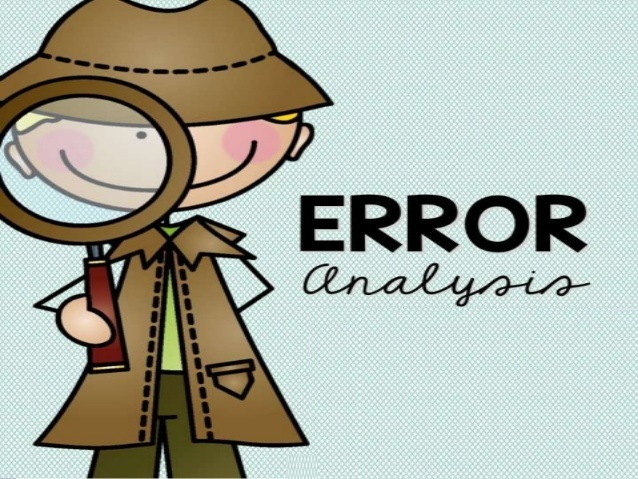First of all, we have to understand, what is Error? An error is a form in learner language that is inaccurate, meaning it is different from the forms used by competent speakers of the language. And then we have to know, what are pronunciation errors? pronunciation errors are those wrong sounds that we make at the moment to pronounce words, for example, the typical word three and tree, there is a big difference in pronunciation between both but some speakers pronounce both as "tree"; and this is a pronunciation error. but, how we can discover these errors? well, we can do an "error analysis".

Error Analysis, it is a method to document the errors that appear in learner language, determine whether those errors are systematic, and, if it is possible, explain what caused them. Native speakers of the language, who hear learner language probably find learners' errors very noticeable, although, as we shall see, accuracy is simply one feature of learner language. While native speakers make unsystematic 'performance' errors (like slips of the tongue) from time to time, second language learners make more errors, and sometimes ones that no speaker ever makes. Error analysis should specialize in errors that are systematic violations of patterns within the input to which the learners are exposed. Such errors tell us something about the learner's interlanguage or underlying knowledge of the principles of the language being learned.
There are mainly two major sources of errors in second acquisition. the first source is interference from the native language while the second source is often attributed to intralingual and developmental factors. The native language of learners plays a big role in learning a second language. Errors because of the influence of the native language are called interlingual errors. Interlingual errors are called transfer or interference errors. language learning errors involve all language components: the phonological, the morphological, the lexical, and the syntactic.
Teachers cannot and should not correct all errors committed by their students. Besides, the frequent correction of oral errors disrupts the process of language learning and discourages shy students from communicating in the target language. In this connection, teachers should concentrate on correcting global errors more than local errors (Teachers should put more emphasis on correcting errors affecting a large percentage of their students.)
- Echoing: teachers echo the word or the phrase or the whole sentence with questioning intonation and stress to give students the hint where exactly the mistake was made.
- Repetition: up to the error a teacher repeats the sentence up to the error and waits for students to correct it
- Hinting /prompting: showing where an error is and giving a clue how to correct it.
- Making a note of common errors: a teacher makes notes of typical errors and deals with them in a remedial or feedback session.
- Nonverbal way: as soon as an error occurs a teacher uses facial expressions to draw students' attention.
- Telling them: (there is an error in the sentence. Who can correct it?)
- Reformulation: a teacher reformulates incorrect version, provides a correct answer, repeats it, and makes an emphasis on it
- Recording on tape: method after students have listened to themselves. This is the method that is rarely used by EFL teachers at restively state universities though it is an alternative way to a variety of error correction methods.











:max_bytes(150000):strip_icc():format(webp)/s-58b832375f9b588080990dba.png)



